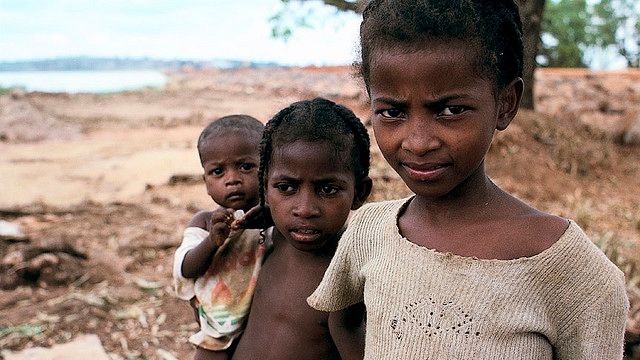Madagascar has one of the highest rates of childhood stunting in the world. Over half of children are chronically malnourished, and more than one-fourth are severely malnourished. Researchers will evaluate the impact and cost-effectiveness of combining different nutrition and child development interventions to help the government of Madagascar optimize the impact of its community-based nutrition program on nutritional and child development outcomes.
Stunting as a result of chronic malnutrition during gestation and early childhood (the first 1000 days) has lifelong implications well beyond physical size. Research has shown that stunting by the age of 2 years predicts poor cognitive, language and behavioral development, higher rates of morbidity and mortality, and worse longer term outcomes including labor market participation. Effective and high impact programs that improve nutrition in the first 1000 days, from conception to age two, are essential to helping children achieve their developmental potential. Given the interplay of so many factors that can have an effect on a child’s healthy development, governments are focusing on better nutrition and improved feeding practices for pregnant women and children -- while also working to improve sanitation, hygiene, and child stimulation. The program being evaluated in Madagascar will improve our understanding of the usefulness of integrating intensive nutrition counseling with nutritional supplements for pregnant mothers and children or with early childhood stimulation.
| Research area: | Early Childhood Nutrition, Development, and Health |
| Country: | Madagascar |
| Evaluation Sample: | 125 poor communities in Madagascar |
| Timeline: | 2012 - 2017 (Completed, endline report pending) |
| Intervention: | Intensive counseling, child and mother nutritional supplements, early childhood stimulation |
| Researchers: | Emanuela Galasso, Development Research Group, World Bank; Lia Fernald, School of Public Health, University of California at Berkeley; Christine Stewart, University of California at Davis; Ann Weber, Stanford University; Christine Stewart, University of California Davis; Harold Alderman, International Food Policy Research Institute; Mamane Zeilani, Director of operational research at Nutriset; Jumana Qamruddin, World Bank; Voahirana Rajoela, World Bank; Remi Rakotomalala, National Coordinator, Health Program Implementation Unit, Ministry of Health; Valerie Ranaivo, Statistician & Project Manager, Proessecal |
| Partners: | Madagascar National Nutrition Office; Madagascar Ministry of Health; School of Social Service, Madagascar; University of California at Berkeley; University of California at Davis; Stanford University; Nutriset |
Context
Madagascar is an extremely poor country, with more than 92 percent of people living on less than $2 a day. More than half of children under the age of five are chronically malnourished.
Fifteen years ago, Madagascar’s Office of Nutrition initiated a large-scale, community-based nutrition program that is still operating throughout the country. The program includes monthly growth-monitoring sessions for infants and young children up to age 5, and community mobilization and nutrition education for primary caregivers. The government is currently focusing on what else can be done during the first 1,000 days of life to reduce stunting when children are most at risk for developmental delays. This evaluation will help the government improve the national nutrition program by examining several components that can be scaled up for pregnant women and their babies in the first two years after birth.
